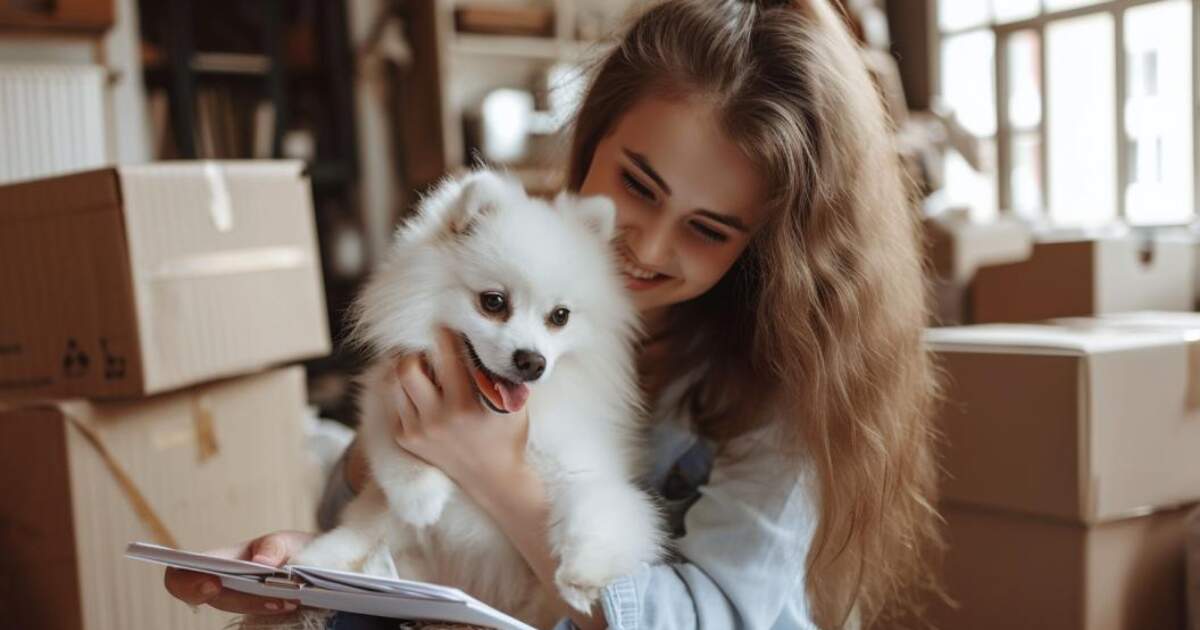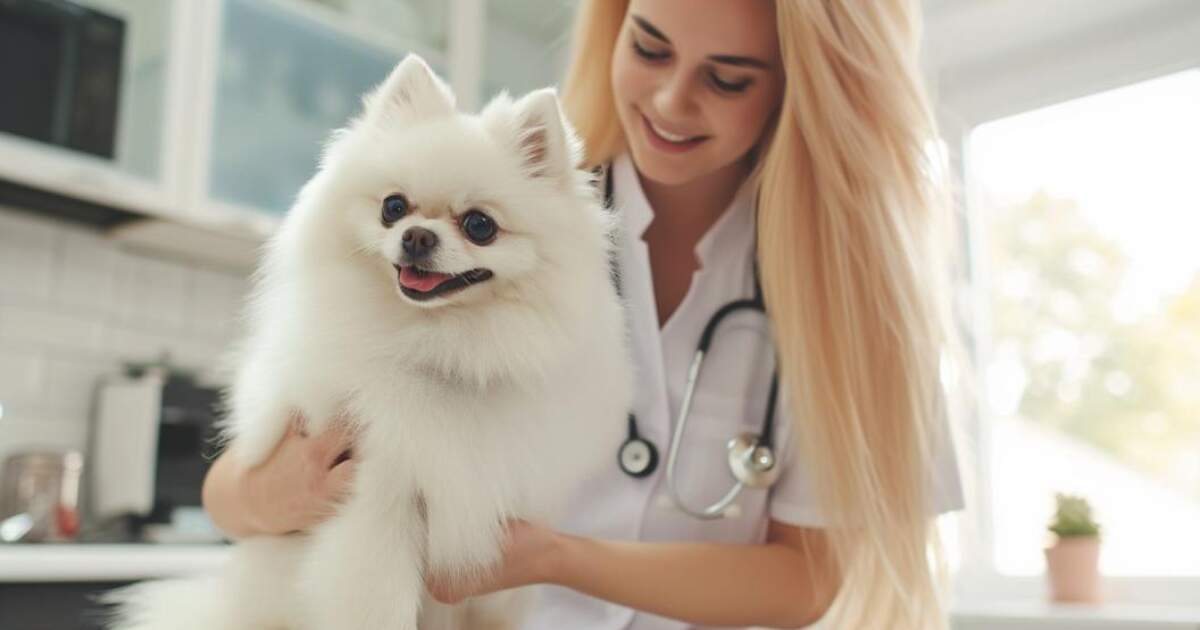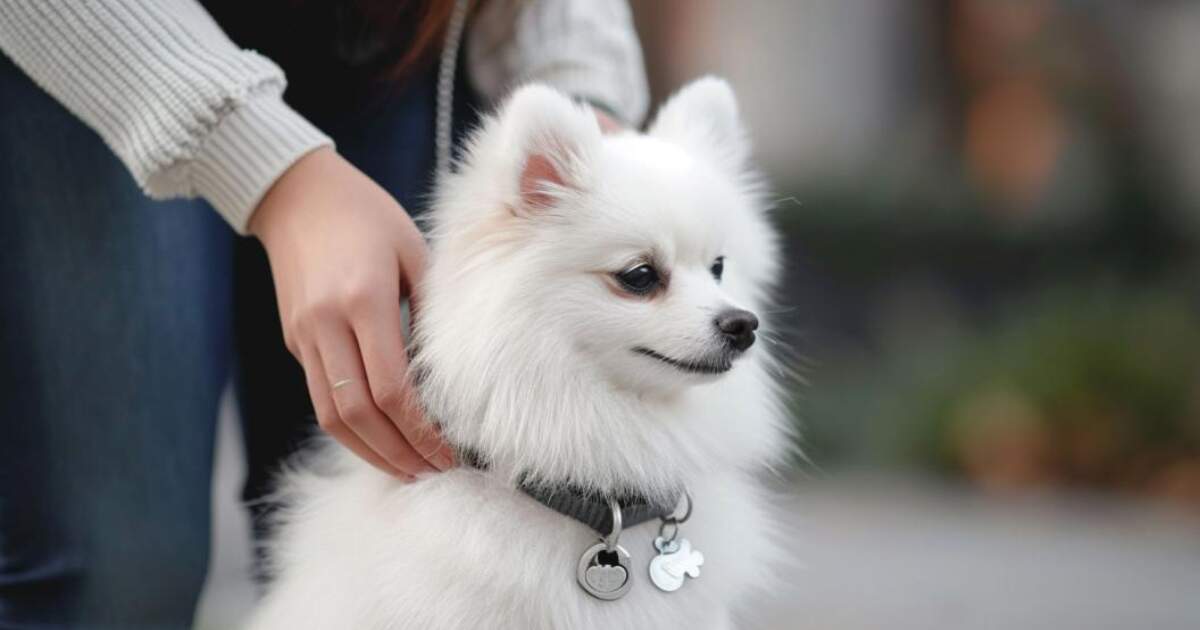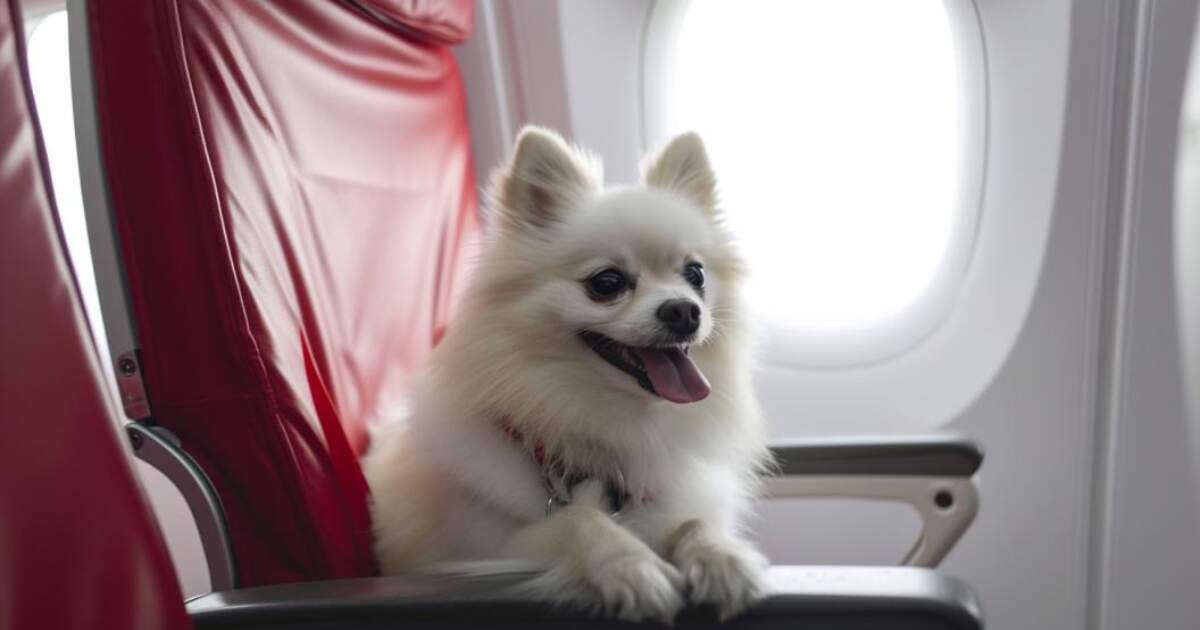Are you worried that moving with a dog (or another animal) will traumatize them?
It’s true that moving can overwhelm pets and their owners. Embarking on a moving journey with your dog is more exciting and joyful when you plan and take care of the logistics.
Relocating locally might be easier, but traversing to a different province or country involves unique challenges and considerations.
This comprehensive guide is designed to simplify your pet relocation experience and ensure a stress-free transition for you and your furry friend.
Pre-Move Preparation and Key Pet Relocation Strategies for Dog Owners
Moving with pets like dogs (and cats, fish, or reptiles!) requires careful planning to keep them calm.
Dog experts suggest getting your pet emotionally and physically ready for its new home months before move day. They remind us that local moves are straightforward, but more kilometres mean more planning.
Vet visits and documents to get before moving a dog
A comprehensive vet check-up is crucial before starting any permanent move with your pet.
This step is vital to pet travel preparation. Ensure your dog’s vaccinations are up-to-date, and discuss any move-related health concerns with your vet.
Obtaining a copy of your pet’s medical records is also essential in emergencies during the move. So is transferring Those records to a new vet near your new home; your current veterinarian should do this for you.
What documents do dogs need to move overseas?
Moving to another country? Research the state or national border requirements for your pet’s vaccinations and certificate and the budget for any quarantine periods or additional care your pet may need before they make their big move.
Keeping a printed version of your pet’s updated vaccination records and health certificates organized and near you during the move is peace of mind if anything happens.
One critical aspect of dog moving safety is identifying your pet. Update your dog’s collar with a new pet ID tag and your new address and contact details.
Attach a label to your pet’s carrier with all those details to safeguard against your pet getting lost during the move.
If your dog isn’t microchipped, consider getting it done as an extra safety measure. According to some recent data, microchipped dogs were returned to their owners 52.2% of the time. Cats can be microchipped, too!
What is a pet microchip, and what does it do?
A microchip for pets is a tiny device that is painlessly and safely inserted under your pet’s skin. A microchip is not a GPS-tracking device; it only allows your pet to be returned to you if they become lost and are found by a good samaritan. Your pet’s location cannot be determined from the microchip.
Keeping a dog calm while packing to move
Is your dog anxious when she sees you packing for a short trip? These tips for keeping them calm while you pack for a move to a new home will help. The main thing is to keep your dog’s daily routine as normal as possible.
Familiarize your dogs and cats with their carriers well in advance. Incorporate the carriers into daily life by allowing pets to explore and spend time in them, using positive reinforcement to build positive associations.
Pack your home gradually and over a long period to acclimate your dog to moving boxes and suitcases. This also lessens the anxious, chaotic energy that often increases in humans and pets on moving days.
Pack their toys, blankets, and food dishes at the end so they can easily access them until moving day.
Additionally, keeping your dog’s routine as normal as possible in the days leading up to the move can provide security and familiarity.
Book Dog-Friendly Movers, Airlines, and Accommodations
Moving day stress for pets is real. However, you can find dog-friendly service providers, like movers, hotels, and airlines. In that case, you can make it a smoother experience for your canine companion.
Working with a dog-friendly moving company
Choose a local moving company so you can focus solely on transitioning your fur baby to his new home with as little interruption as possible.
Look for movers with experience with pets. They may offer specialized services to ensure a safe and efficient moving process.
Even though pets cannot be moved in the moving truck, your ideal moving company will want to know beforehand that you have pets.
Communicate your needs upfront, ask them as many questions as you need to feel comfortable and read online reviews from other customers in your area.
Finding dog-friendly accommodations
While you relocate, you may need to spend a few nights in a hotel with your pet. As a rule, pet-friendly accommodations must be booked in advance as dog hotel rooms are limited and only sometimes available at the last minute.
Which airlines are pet-friendly?
Choosing the right airline is one of the most important yet overlooked things when moving long-distance with a dog. Here’s a list of airlines that allow dogs to fly.
Flying with a dog on Air Canada
Air Canada allows cats and small dogs as long as they are 12 weeks old. There is a one-way fee of $50 for flights with dogs within Canada and the US (not including Hawaii) and $100 on international flights.
When flying with a pet on Air Canada, you can’t check in online or at a self-service kiosk; you must see an attendant at the gate.
Flying with a dog on WestJet
WestJet allows dogs and other animals, but the airline requires guests to make all arrangements for their pets over the phone.
Travel within or between Canada and the US costs between $50 and $59, depending on travel date, exact kennel size, and other factors.
The international pet fee is between $100 and $118. Kennels must be soft-sided and no larger than 41 cm L x 25.4 cm W x 21.5 cm H (16” L x 10” W x 8.5” H).
Flying with a dog on Air Transat
Air Transat allows small pets who weigh less than 22 lbs (10 kg) in a carrier to travel in the cabin. Costs vary, starting as low as $50, depending on the dog’s size, whether they travel in-cabin or in cargo, and how far in advance the payment for their travel is made.
Carriers should not exceed 9.5″ x 10″ x 17″ (24.1 cm x 25.5 cm x 43.2 cm), and the combined weight of the pet and carrier should not exceed 99 lbs (45 kg).
Flying with a dog on Lynx Air
Lynx Air allows dogs at least eight weeks old to fly. A fee of $79.99 will apply and must be paid in advance during booking—the company requires at least 48 hours’ notice for pets in the cabin. Pets cannot be checked as baggage on this airline, and the maximum dimensions for a kennel are 41cm length x 21.5cm height x 25cm width (16 in. L x 8.5 in. H x 10 in. W).
Flying with a dog on Porter Airlines
Porter allows up to two pets in the cabin on any flight, so reserve a spot at least 24 hours before your travel. It costs $50-57.50 per direction.
Small dogs (under 20 lbs / 9 kg, including its carrier) can travel with their owners in the cabin. Carriers must be leakproof and well-ventilated, and pets must be able to move comfortably inside.
Making Your Dog Comfortable on Moving Day
Moving with a dog can be extra stressful, but these ideas are as creative as they are helpful.
Innovative tools to help move with a dog
Many of us are familiar with the benefits of Reiki to help us ease anxiety and heal. Reiki is also helpful in soothing our dog’s anxiety, so consider a dog Reiki session immediately before or after your move.
Thundershirts for dogs are a very cool invention. Scientists discovered that by being wrapped and held tightly, autistic children feel comforted and safer. So, someone took the concept and made a doggie version.
Or try a calming dog collar. It fits around your dog’s neck like a regular collar. As the dog’s body temperature warms the rubber, it releases feel-good, calming pheromones.
Finally, use a dog-centric app like Woofz for on-the-spot training, dog comfort, and aftercare solutions. The app is like having a bunch of certified dog behaviourists and trainers with you, so you don’t have to feel alone.
The morning of moving with a dog
The dog experts at Woofz gave us some advice to help you and your dog on moving day.
On the morning of the move, they suggest taking your dog for an extra-long walk and following your usual routine.
As people arrive, it’s time to pop them into their crates or give them to a friend or family member for the day so they don’t get stressed with all the commotion or run out of the front door.
Making a dog comfortable in a new home
In the new home, get them comfortable in a room and ensure the door to their room is closed to dampen the noise from movers.
Ensure they have clean water and familiar items like toys and blankets, and keep to their regular feeding schedule as much as possible.
Once securely inside, open the carrier doors and allow the cats to explore at their own pace. If they still need to be ready to come out of their carriers.
What are the best toys to give a dog when moving?
The act of chewing in itself is a stress-buster. Giving your dog a mental challenge with a Kong, a LickiMat, a snuffle mat, or his favourite chew toy is a great idea, too.
This causes him to engage his logical thinking brain instead of his emotional brain, which is a highly effective way to alleviate your dog’s anxiety and stress.
What scents will calm a dog on a moving day?
Whether moving by car or airplane, ensure your dog’s bedding has its own scent. It’s also a good idea to give him access to something with your scent, like a t-shirt you’ve slept in.
Dogs feel more secure when surrounded by familiar scents, which is an easy way to help them feel more secure amidst all the upheaval.
If you put in some brand new bedding on travel day, the scent and texture will be unfamiliar and just another thing for him to stress about. The more familiar things, the less stressful the travel experience will be.
How to calm a noise-sensitive dog on a moving day?
Regardless of what kind of move you’re doing, it’s always best to keep upheaval to a minimum in the run-up to the move.
So, whenever you’re packing boxes or moving furniture around, keep your dog in a quiet room or outside the yard, away from all the action.
You can also play dog-specific music in the background and on the car journey. Studies show this can have a calming effect on dogs.
Settling a Dog into a New Home after Moving
After the journey, it is crucial to help your dog adjust to its new environment. This phase is vital for their security and comfort in the new setting.
Woofz experts tell us that it is normal for dogs to take about three weeks to fully adjust to a house move, but remember that more nervous dogs will often take longer.
Like all of us, dogs can feel overwhelmed by change. If you are not moving too far away, take your dog for a few walks in their new neighbourhood in advance to introduce them to the sights, smells and sounds early.
You know they’ll want to leave behind a few scents of their own.
Establishing your dog’s routine after moving day
Try to maintain your routine in terms of time spent walking, meals, etc., to maintain as much normality as possible. If your dog has no outside access, you may need to introduce more walks and enrichment toys.
Reassure your pet, as your love for them is essential to their happiness.
Moving With a Dog? Keep Calm and Move On.
As you can see, moving with a dog involves maintaining and establishing your dog’s normalcy before and after the move.
Whether driving a short distance or flying across the country, putting your dog’s comfort and safety first is crucial for a stress-free move for both of you.
Working with a moving company, hotel and airline with pet experience makes things much more manageable, too!
Maintain your dog’s routine and ensure they’re securely transported. You’ll be happily settling into your new home without a worry.























